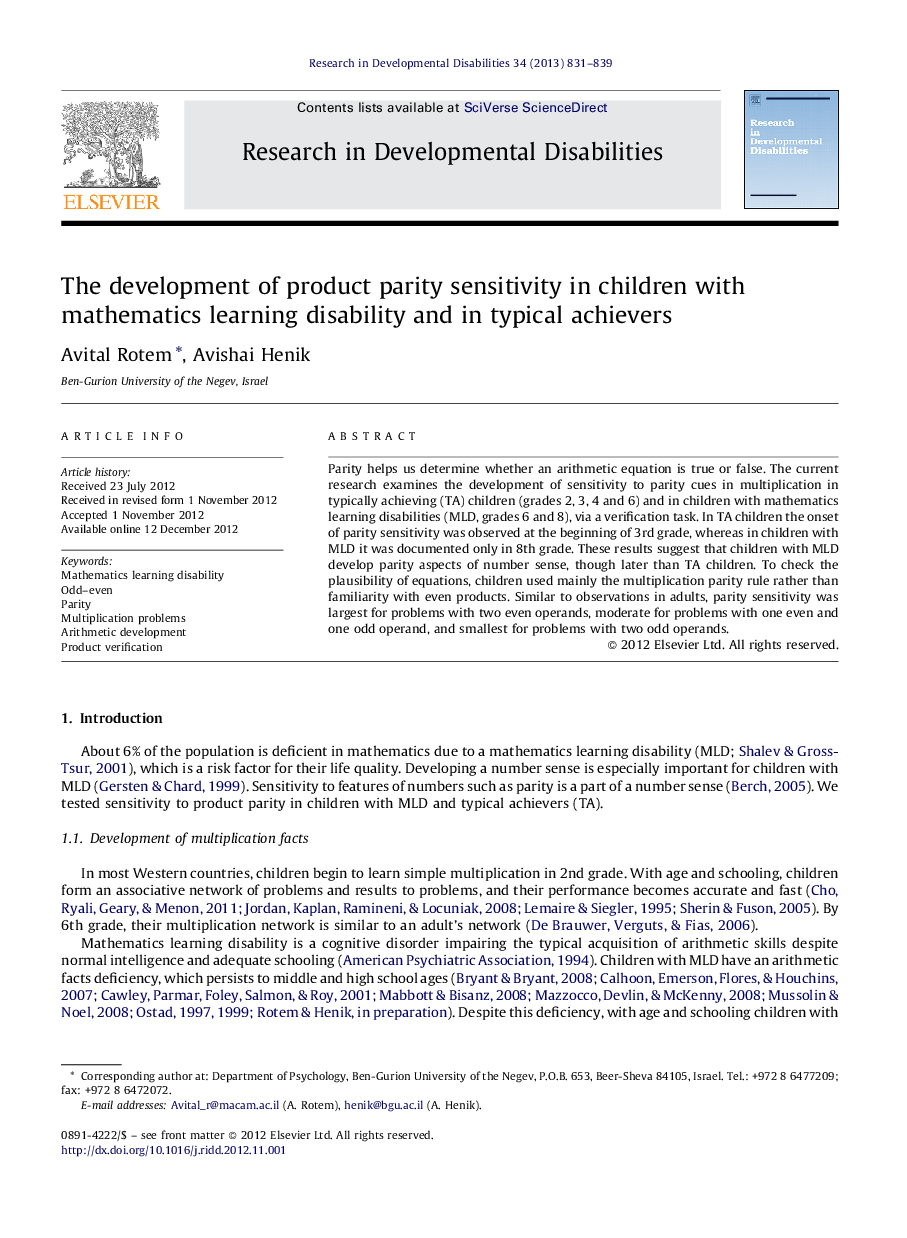| کد مقاله | کد نشریه | سال انتشار | مقاله انگلیسی | نسخه تمام متن |
|---|---|---|---|---|
| 371528 | 621927 | 2013 | 9 صفحه PDF | دانلود رایگان |

Parity helps us determine whether an arithmetic equation is true or false. The current research examines the development of sensitivity to parity cues in multiplication in typically achieving (TA) children (grades 2, 3, 4 and 6) and in children with mathematics learning disabilities (MLD, grades 6 and 8), via a verification task. In TA children the onset of parity sensitivity was observed at the beginning of 3rd grade, whereas in children with MLD it was documented only in 8th grade. These results suggest that children with MLD develop parity aspects of number sense, though later than TA children. To check the plausibility of equations, children used mainly the multiplication parity rule rather than familiarity with even products. Similar to observations in adults, parity sensitivity was largest for problems with two even operands, moderate for problems with one even and one odd operand, and smallest for problems with two odd operands.
► Children with mathematics learning disabilities develop parity aspects of number sense.
► Parity sensitivity emerges at 3rd grade in typical achievers and 8th grade in children with MLD.
► Children use the parity rule to check the plausibility of proposed results.
► Like adults, children's sensitivity to parity varies across problem types.
Journal: Research in Developmental Disabilities - Volume 34, Issue 2, February 2013, Pages 831–839